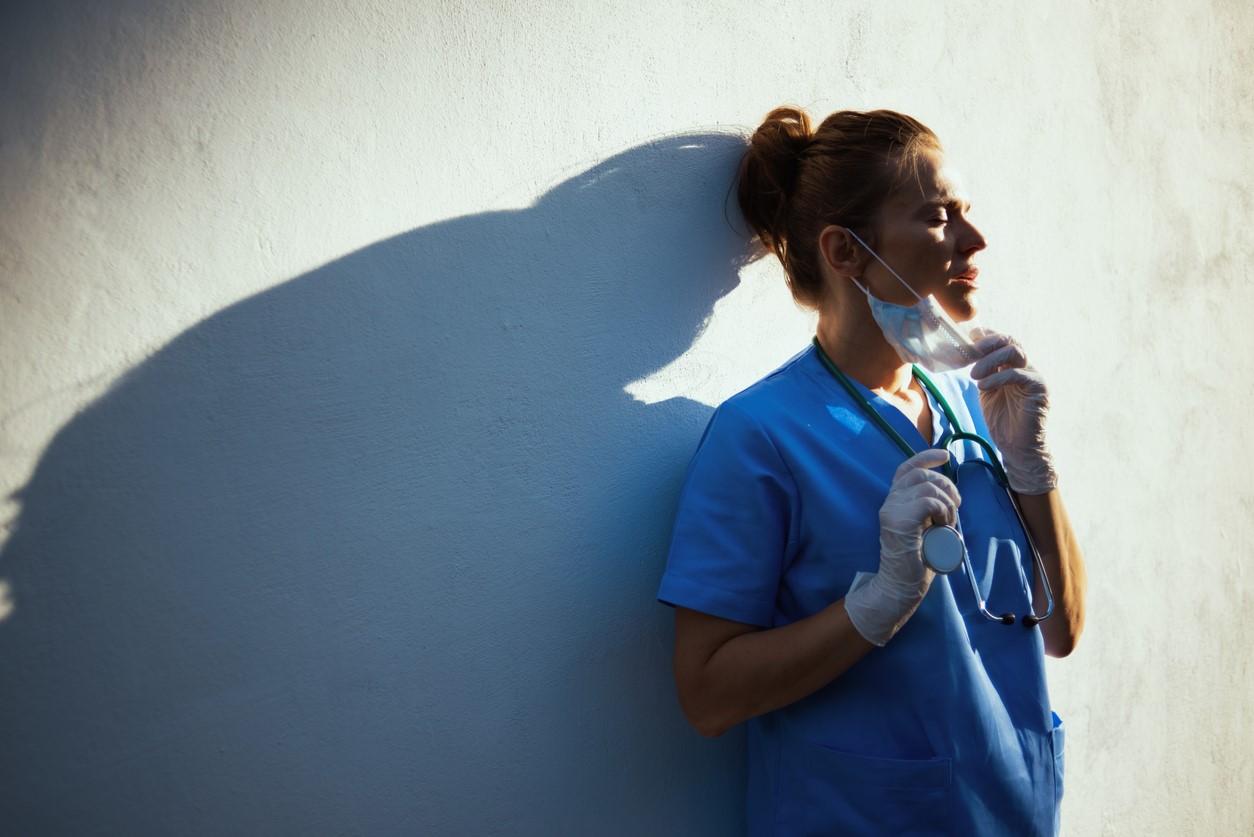A survey of US healthcare workers (HCWs) before and during COVID-19 reveals that emotional exhaustion (EE)—a problem even before the pandemic—has worsened, threatening to compromise patient care and fuel staff turnover.
In the study, published today in JAMA Network Open, a team led by Duke University investigators analyzed 107,122 responses to the electronic Safety, Communication, Organizational Reliability, Physician, and Employee Burnout and Engagement (SCORE) survey fielded in September 2019, September 2020, and September 2021 to January 2022.
Respondents included HCWs in clinical and nonclinical roles at 76 community hospitals within two large healthcare systems. The most commonly reported role was nursing (40.9%), and 16.9% had worked less than 1 year at their workplace, while 56.2% reported 1 to 10 years and 26.9% 11 years or more.
'A social contagion effect'
During the study period, estimated rates of EE rose from 31.8% in 2019 to 40.4% (proportional increase, 26.9%). Physicians reported less EE from 2019 to 2020 (31.8% to 28.3%) but more EE (37.8%) in 2021. Nurses' EE climbed from 40.6% in 2019 to 46.5% in 2020 and 49.2% in 2021 and 2022. Compared with nurses, HCWs in other roles showed a comparable but milder trend in EE.
"Intraclass correlation coefficients revealed clustering of exhaustion within work settings across the 3 years, with coefficients of 0.15 to 0.17 for emotional exhaustion and 0.22 to 0.24 for emotional exhaustion climate, higher than the .10 coefficient typical of organizational climate (a medium effect for shared variance), suggestive of a social contagion effect of HCW exhaustion," the researchers wrote.
HCWs in every role at every time point—including two of three in late 2021—reported that their colleagues had higher EE than they did. This finding, the researchers said, reflects decades of research showing that people tend to be unrealistically optimistic about their own health and well-being than they are about others' health.
The results, the authors said, suggest that current HCW well-being programs and resources may not be enough to offset the increases in EE and may be even more difficult to access owing to staff shortages, exhaustion, and motivation to start and finish these interviews.
"The challenges posed by COVID-19 have been an excessive test to human well-being around the world," they wrote. "Few groups experienced this stress more acutely than the health care workers (HCWs) who persistently placed themselves in harm’s way to serve patients."
While HCWs were hailed as heroes early in the pandemic, the investigators noted, they were often vilified and ostracized later on, when public health mandates became highly politicized.
Like other workers, HCWs had to adapt to school and daycare closures, but they had the added stress of caring for infected patients amid shortages of personal protective equipment and other resources, evolving patient-visitation policies, difficult clinical choices resulting in moral injury (distress when one's actions clash with personal beliefs), and often-unpopular vaccine mandates.
After broad vaccine availability and amid surges of the more highly transmissible Delta and Omicron variants, HCWs also had to care for many unvaccinated and stressed patients and their families and enforce infection-control protocols, often while facing vitriolic and bewildering verbal attacks and threats.
"Moral injury in HCWs is consistently associated with lower quality of life and higher levels of emotional exhaustion," the researchers wrote. "Perhaps it should not be a surprise that 40% of nurses and 23.8% of physicians plan to exit their practice in the next 2 years."
Calling existing programs and resources to support HCW well-being "woefully inadequate," the authors said that such initiatives need to be broadly accessible and evidence-based and that leaders should role-model their use. "We are only beginning to understand the toll of the pandemic on HCW well-being, and much more will be revealed over the next few years," they wrote.
Promoting HCW health, well-being
In a related commentary, Ari Shechter, PhD, and Allison Norful, PhD, RN, both of Columbia University, called for research into burnout among other HCW roles such as respiratory therapists, pharmacists, and nursing assistants, as well as those who work in non-hospital settings such as primary care.
"Roles and responsibilities, team dynamics, and geographically reliant resources may play a role in HCW burnout and are dependent on the care delivery setting," Shechter and Norful wrote. "Future research should consider isolating these variables to better determine discipline- or setting-specific factors so that we may inform the development and testing of targeted burnout mitigation interventions across the board."
Likewise, real-time data should be collected to determine which organizational, structural, and individual factors contribute to HCW burnout and related health risks, they added.
"Doing so may enhance our ability to inform interventions and policy changes that mitigate risk and promote effective recovery," Shechter and Norful wrote.
"We must harness the lessons learned from this pandemic so that we can reshape approaches to care delivery, improve HCW training, and conduct rigorous research needed to develop strategies to promote HCW well-being."




















